
Louise Erdrich is an American author of novels, poetry, and children's books featuring Native American characters and settings. She is an enrolled member of the Turtle Mountain Band of Chippewa Indians, a federally recognized tribe of the Anishinaabe.

Nelle Harper Lee was an American novelist. She penned the 1960 novel To Kill a Mockingbird that won the 1961 Pulitzer Prize and became a classic of modern American literature. Lee received numerous accolades and honorary degrees, including the Presidential Medal of Freedom in 2007 which was awarded for her contribution to literature. She assisted her close friend Truman Capote in his research for the book In Cold Blood (1966). Capote was the basis for the character Dill Harris in To Kill a Mockingbird.
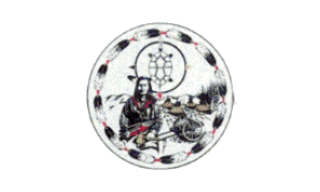
The Turtle Mountain Band of Chippewa Indians is a federally recognized Native American tribe of Ojibwe based on the Turtle Mountain Indian Reservation in Belcourt, North Dakota. The tribe has 30,000 enrolled members. A population of 5,815 reside on the main reservation and another 2,516 reside on off-reservation trust land.

Love Medicine is Louise Erdrich's debut novel, first published in 1984. Erdrich revised and expanded the novel in subsequent 1993 and 2009 editions. The book follows the lives of five interconnected Ojibwe families living on fictional reservations in Minnesota and North Dakota. The collection of stories in the book spans six decades from the 1930s to the 1980s. Love Medicine garnered critical praise and won numerous awards, including the 1984 National Book Critics Circle Award.

Tracks is a novel by Louise Erdrich, published in 1988. It is the third in a tetralogy of novels beginning with Love Medicine that explores the interrelated lives of four Anishinaabe families living on an Indian reservation near the fictional town of Argus, North Dakota. Within the saga, Tracks is earliest chronologically, providing the back-story of several characters such as Lulu Lamartine and Marie Kashpaw who become prominent in the other novels. As in many of her other novels, Erdrich employs the use of multiple first-person narratives to relate the events of the plot, alternating between Nanapush, a tribal patriarch, and Pauline, a young girl of mixed heritage.

Jacklight is a 1984 poetry collection by Louise Erdrich. The collection grew from poems Erdrich wrote for her 1979 Master of Arts thesis at Johns Hopkins University.
The Night Watchman may refer to:

Turtle Mountain Indian Reservation is a reservation located in northern North Dakota, United States. It is the land base for the Turtle Mountain Band of Chippewa Indians. The population of the Turtle Mountain Indian Reservation consists of Plains Ojibwe and Métis peoples; the reservation was established in 1882.
Native American literature is literature, both oral and written, produced by Native Americans in what is now the United States, from pre-Columbian times through to today. Famous authors include N. Scott Momaday, Leslie Marmon Silko, Simon Ortiz, Louise Erdrich, Gerald Vizenor, Joy Harjo, Sherman Alexie, D'Arcy McNickle, James Welch, Charles Eastman, Mourning Dove, Zitkala-Sa, John Rollin Ridge, Lynn Riggs, Diane Glancy, Hanay Geiogamah, William Apess, Samson Occom, et al. Importantly, it is not "a" literature, but a set of literatures, since every tribe has its own cultural traditions. Since the 1960s, it has also become a significant field of literary studies, with academic journals, departments, and conferences devoted to the subject.

Heid E. Erdrich is a poet, editor, and writer. Erdrich is Ojibwe enrolled at Turtle Mountain.

The Round House is a novel by the American writer Louise Erdrich first published on October 2, 2012 by HarperCollins. The Round House is Erdrich's 14th novel and is part of her "justice trilogy" of novels, which includes The Plague of Doves released in 2008 and LaRose in 2016. The Round House follows the story of Joe Coutts, a 13-year-old boy who is frustrated with the poor investigation into his mother's gruesome attack and sets out to find his mother's attacker with the help of his best friends, Cappy, Angus, and Zack. Like most of Erdrich's other works, The Round House is set on an Ojibwe reservation in North Dakota.
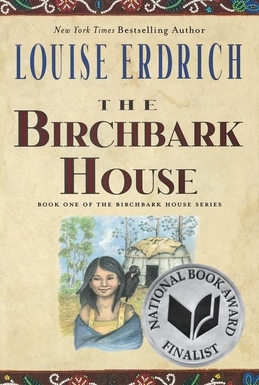
The Birchbark House is a 1999 indigenous juvenile realistic fiction novel by Louise Erdrich, and is the first book in a five book series known as The Birchbark series. The story follows the life of Omakayas and her Ojibwe community beginning in 1847 near present-day Lake Superior. The Birchbark House has received positive reviews and was a 1999 National Book Award Finalist for young people's fiction.

Go Set a Watchman is a novel written by Harper Lee before her Pulitzer Prize-winning To Kill a Mockingbird (1960), her only other published novel. Although Go Set a Watchman was initially promoted as a sequel by its publisher, it is now accepted that it was a first draft of To Kill a Mockingbird with many passages in that book being used again.

LaRose is a novel by the Ojibwe author Louise Erdrich, published in 2016 by HarperCollins. The book received positive reviews from multiple publications, including The New York Times, The Kansas City Star, Winnipeg Free Press, The Philadelphia Inquirer, The Washington Post, The A.V. Club, The Sydney Morning Herald, USA Today, and The Chronicle Herald. It won the 2016 National Book Critics Circle Award in fiction. The novel features the same setting as Erdrich's 2012 novel The Round House.
List of works by or about American author Louise Erdrich.

Four Souls (2004) is an entry in the Love Medicine series by Chippewa (Ojibwe) author Louise Erdrich. It was written after The Master Butcher’s Singing Club (2003) and before The Painted Drum (2005); however, the events of Four Souls take place after Tracks (1988). Four Souls follows Fleur Pillager, an Ojibwe woman, in her quest for revenge against the white man who stole her ancestral land. Fleur appears in many books in the series, and this novel takes place directly after her departure from the Little No Horse reservation at the end of Tracks. The novel is narrated by three characters, Nanapush, Polly Elizabeth, and Margaret, with Nanapush narrating all of the odd numbered chapters and Polly Elizabeth taking all but the last two even numbered chapters.
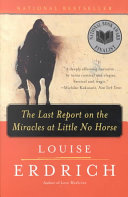
The Last Report on the Miracles at Little No Horse, first published in 2001, is a novel by author Louise Erdrich. The novel tells the story of Agnes DeWitt as Father Damien, the reverend who becomes part of the reservation community. Erdrich's narration alternates between Agnes’ early 20th-century memories and a series of interviews set in 1996 wherein another priest questions Damien about the possible canonization of Pauline Puyat.
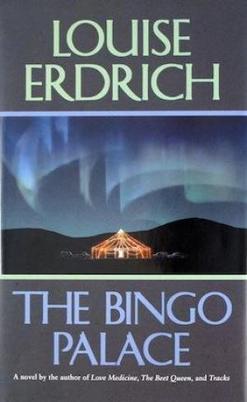
The Bingo Palace is a novel written by Louise Erdrich published in 1994, with three chapters appearing in the Georgia Review, The New Yorker, and Granta. It is the fourth novel in Erdrich's Love Medicine series, and it follows Lipsha Morrissey as he is summoned home by his grandmother Lulu Lamartine. He returns home to the reservation for the first time in years and finds himself in rapture of a woman named Shawnee Ray. The novel discusses themes of family and identity from an Anishinaabe perspective.
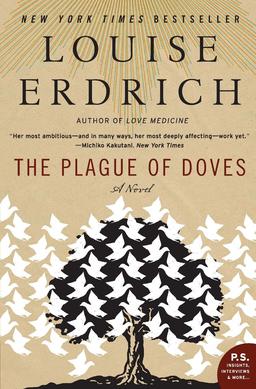
The Plague of Doves is a 2008 New York Times bestseller and the first entry in a loosely-connected trilogy by Ojibwe author Louise Erdrich. The Plague of Doves follows the townsfolk of the fictional Pluto, North Dakota, who are plagued by a farming family's unsolved murder from generations prior. The novel incorporates Erdrich's multiple narrator trope that is present in other works including the Love Medicine series. Its sequel is the National Book Award winning novel The Round House. Erdrich concluded the "Justice" trilogy with LaRose in 2016.

Future Home of the Living God is a dystopian novel and work of speculative fiction by Louise Erdrich first published on November 14, 2017, by HarperCollins. The novel follows 26-year-old Cedar Hawk Songmaker, an Ojibwe woman raised by white parents, who visits her birth mother's reservation just as the United States becomes increasingly totalitarian following a reversal of evolution.
















